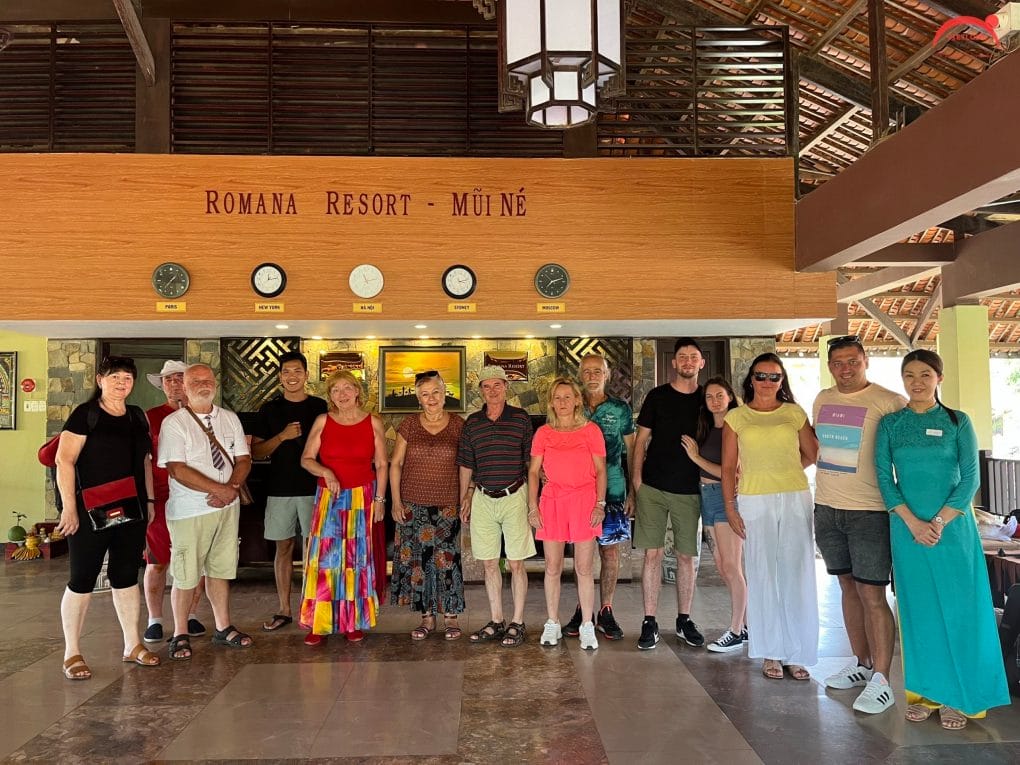THE MAC DYNASTIES
The Mac dynasty ruled the northern provinces of Vietnam from 1527 till 1592, when they lost control over the capital Hanoi for the last time. Later Mac representatives ruled over the province of Cao Bang (with the direct support of the Chinese) until 1667. The founder of the Mac Dynasty was a man who was related to a famous Tran Dynasty Confucian scholar named Mac Dinh Chi. Unlike his ancestor, Mac Dang Dung choose to enter the military and ascended the ranks to became the senior general in the Vietnamese army. Later he seized power in a coup and ruled Vietnam from 1527 till his death in 1541. Officially he resigned his position as king in favor of his son but the reality was, he continued to rule.
THE HISTORY SUMMARY
The map of Vietnam showing (roughly) the areas controlled by the Trinh, Nguyen, Mac, and Champa about the year 1640. The Mac now lost all of Vietnam except for the areas around Cao Bang province which was under the formal protection of the Chinese army. The new Mac leader was Mac Kinh Chi, he managed to assemble a large army which defeated the army of Trinh Tung but a year later, he and his army were wiped out by a new Trinh army under Trinh Tung. Mac Kinh Cung ruled for more than twenty years (1593-1616). Based out of Van Ninh (Quang Ninh Province) the Mac army staged many attacks against the Trinh. The Trinhrequested and received aid from the Nguyen and the joint army (with Nguyen Hoang) defeated the Mac. In 1598 yet another official Chinese commission declared the Mac to be rulers over Cao Bang province and so the Mac rulers stayed in this protected area, occasionally launching raids into Trinh controlled Vietnam. During his time in power, the aggressive Trinh Lord Trinh Trang conquered more territory from the Mac. He also began the Trinh-Nguyen War which started to go badly for him after the disaster at the battle of Truong Duc in 1548. The next Trinh Lord, Trinh Tac was more successful than his father. He pushed the Nguyen back to their original lands and then spent the next 15 years rebuilding the country and his army. Up until this point the Trinh had been prevented from completing the final destruction of the Mac because the Mac were protected by the Ming Dynasty. But now the Ming had fallen (in 1644) and had been replaced by the Manchu. As a result, the Mac no longer enjoyed the same relationship with the Chinese government. In the early 1660s, the Mac made the mistake of siding with a disloyal governor and so the Kangxi Emperor withdrew his protection of the Mac. Learning of this change, in 1667, Trinh Tac invaded Cao Bang, defeated the Mac army and drove them out of the province and into China. The last mention of the Mac comes in 1677 when a Mac army invaded northern Vietnam from their refuge in southern China. This invasion was defeated by the Royal (Trinh) army, still under the command of Trinh Tac. So ended the long but ineffective dynasty founded by Mac Dang Dung. The civil war he started continued after his descendants lost control of Hanoi and turned into a war between the Trinh and the Nguyen. The Vietnamese civil war finally came to an end with the peace of 1673.
MAC DANG DUNG
Famed for his strength and cunning, got his start as a bodyguard for the cruel and reviled La King – Le Uy Muc (around 1506). Over time, despite the deaths of several kings, Mac Dang Dung increased his power and gained many supporters. However, he also gained the enmity of other rivals for power. Around 1520, a civil war started. This war would last, with occasional breaks, for the next 150 years. Apparently fearing the growing ambition of Mac Dang Dung, the young king of Vietnam, Le Chieu Tong, fled to the south. A revolt started with the Trinh and the Nguyen families claiming to support the king against the power of Mac Dang Dung. Mac Dang Dung responded by proclaimed the king’s younger brother, Prince Xuan, was now the true king of Vietnam and installed as king under the name Le Cung Hoang. The revolt was ended, temporarily, when Mac Dang Dung’s forces captured and executed Le Chieu Tong along with the leaders of the revolt. In 1527 Mac Dang Dung removed the figurehead king he had installed earlier and proclaimed himself as the new king of Vietnam under the title Minh Duc. This usurpation of the throne from the rightful Le kings was not well received by the officials in the government. Some were killed, some committed suicide, some fled to the south to join a new revolt by the Trinh and the Nguyen against the new king. A new revolt began, and both sides tried to pull in allies, mainly the Ming Dynasty ruling China but also from King Phothisarat I of Lan Xang (modern-day Laos). Mac Dang Dung, through submissive diplomacy and massive bribes, convinced the Chinese not to attack in 1528. He then abdicated his position as king in favor of his son, Mac Dang Doanh a year later. However, this was done purely to solidify his son’s claim to rule after he was gone. In reality Mac Dang Dung continued to rule with the title of Senior King. The revolt in the south gathered strength and over the next three years all the provinces south of the Red River were captured by the Nguyen and Tr?nh armies. In 1533 the figurehead Le king, Le Trang Tong, was officially crowned at the newly recaptured western capital. A few years later the situation for Mac Dang Doanh turned desperate as an official Chinese delegation reported that the Mac rule was illegitimate and that the La should be restored to power. As a result, in 1537 a huge Chinese army came down from the north with orders to defeat the Mac. At this point, Mac Dang Doanh died and his father reclaimed the throne. Once again, Mac Dang Dung managed to send the Chinese away by means of diplomacy (and bribes). The Chinese official position was that the Mac should rule over the northern half of Vietnam, while the Le should rule over the southern half (in other words, below the Red River). Then the Chinese returned home. The Nguyen and the Trinh refused to accept this division of the country and the war continued. In 1541 Mac Dang Dung died and was succeeded by his grandson Mac Phuc Hai.
MAC PHU HAI
Ruled only for six years, during which he was defeated by the Trinh army and lost more territories. He was succeeded by Mac Phuc Nguyen (1545-1561) who had to fight a war with his brother Trung.
MAC MAU HOP
Ruled from 1561 to 1592. He was the last significant Mac ruler. In 1572 the capital was captured by the Trinh army but then he recaptured it a year later. Then, in 1592, Trinh Tung unleashed a massive invasion of the north and conquered Hanoi along with the rest of the northern provinces. Mac Mau Hop was captured during the retreat and was cut to pieces over three days.






